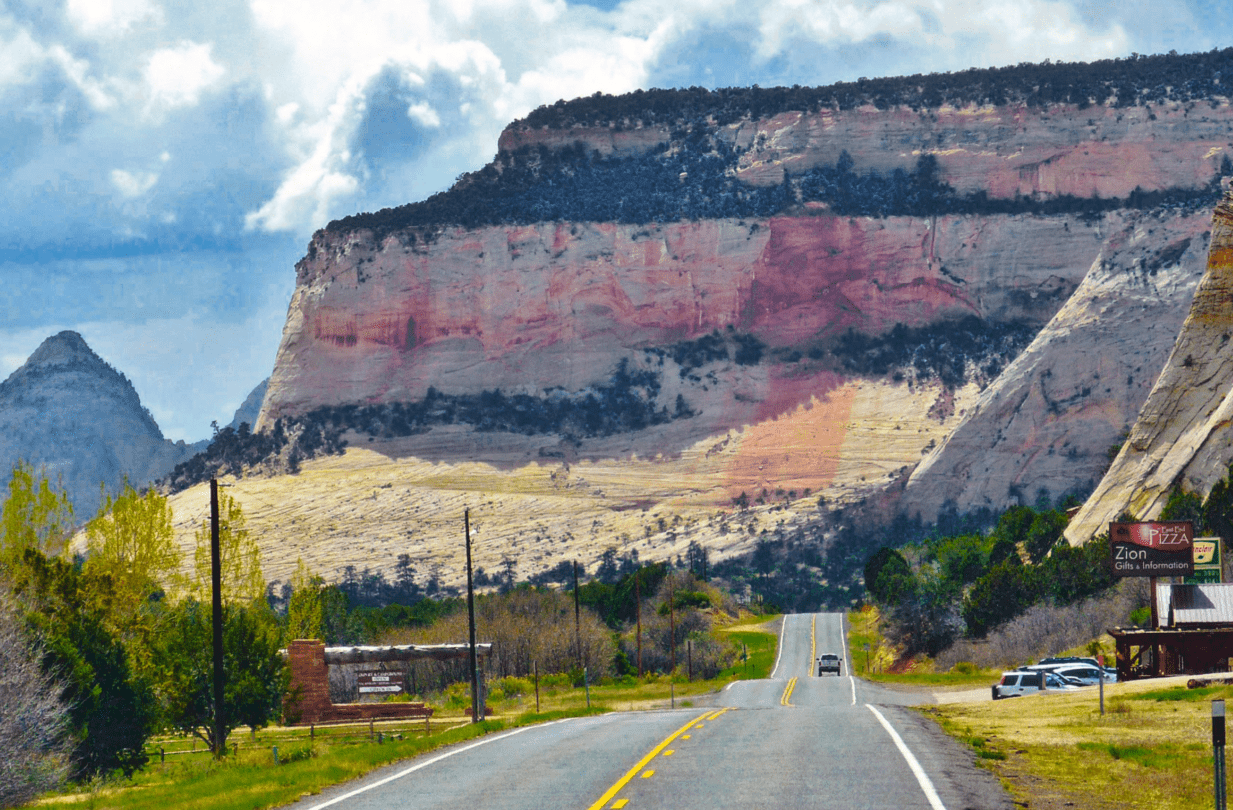The Last Unprotected Gateway
National Parks do not operate in a vacuum. Factors outside park boundaries affect parks in big ways, impacting everything from ecosystems to the visitor experience. As such, collaborative donor-funded projects enhance experiences both inside and beyond the park gates.
For instance, in 1924, the National Park Service helped pay for the construction of the now-historic Rockville Bridge to shorten the distance between Zion and Grand Canyon by 33 miles, which was a crucial benefit to the Utah Parks Company and the buses that transported tourists to the two national parks. When the Zion shuttle network was implemented in 2000, the park established a partnership with Springdale to initiate the Springdale town shuttle, which in turn alleviated parking within the park. More recently, Zion expended its resources to help achieve Wild and Scenic River designation for the upper portion of the Virgin River, preventing any upstream impoundments outside the park to protect fish and wildlife habitats as well as preserving the river for the recreational enjoyment of visitors in the park.
Today, the Zion Forever Project is expending its resources outside the park to East Zion.
The idea of conservation and development to improve the visitor experience on Zion’s east side is nothing new. More than two decades ago, the park’s management plan acknowledged the need for such development in anticipation of rising visitation. Back then, however, the park did not know how it would accommodate such development. Today, thankfully, it does.
Zion Forever is working to acquire conservation easements on over 900 acres just outside the park’s eastern boundary to protect the viewshed, the watershed, and habitats for the park’s animals on behalf of Zion National Park.
Fortunately, many East Zion landowners share the vision and have been cooperative and willing to allow conservation easements to be placed on these critical parcels, helping to ensure that traditional development does not happen.
One such example is the McLaws family, owners of Zion Mountain Ranch. Their three- -hundred twenty-four-acre property adjacent to the ranch now features a conservation easement, meaning that development rights have been purchased and the land won‘t be developed. Currently, a herd of bison graze on this land parcel, adding to the view and experience of visitors entering and exiting Zion’s east entrance.
“So many small towns near national parks are overcooked and overcrowded,” says McLaws, “That’s not something we want to replicate over here.”
The McLaws have also donated 18 acres of land for the proposed East Zion Visitor Center, which, if not for the easement, would have become a strip mall and gas station. Additionally, other landowners have donated hundreds of acres near Zion National Park to ensure they remain free from commercial development.
The State of Utah has also been a valuable partner in stopping local development, granting $300,000 from LeRay McAllister Critical Lands Conservation funds to help buy out development rights on a 37.7-acre parcel along the park’s east boundary.
“For more than two decades, the McLaws family and its partners have kept this gateway corridor pristine and free of commercial development. Today, it is one of the last remaining undeveloped gateways to a National Park in the lower 48 states,” said Stephani Lyon, Zion Forever’s Director of Philanthropy. “The nation owes much to the McLaws family for maintaining this corridor in keeping their family principles. Their conservation vision, balanced with compatible contributive commerce, is a shared vision that will protect the park’s resources while extending the visitor experience and economic opportunities beyond the park‘s traditional borders.”
Through these combined efforts, East Zion’s future includes more recreation opportunities that are free and open to the public with a new visitor center and more trails to accommodate visitors. This will ease the pressure off the main Zion Canyon that continues to see millions of visitors each year. This initiative will be a part of Zion’s legacy investment by being much less impactful on the environment than the traditional development visitors expect immediately outside park boundaries.
Funding is still needed to secure further development rights and land in this corridor. Securing these rights will ensure that East Zion visitors are greeted by land untouched by commercial development and preserve the viewshed, watershed, wildlife habitat, and the recreation value of this pristine land. There have been great strides in these conservative actions, but more financial support is needed to ensure more land is protected from commercial development.

